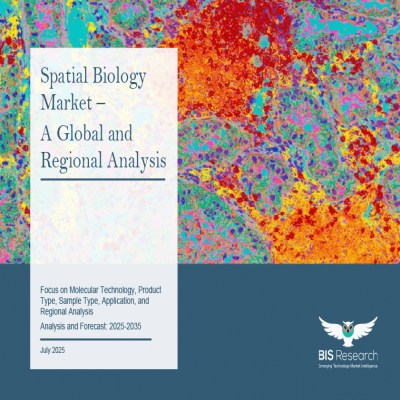Introduction to Europe Spatial Biology Market
The Europe spatial biology market is projected to reach $1,472.0 million by 2035 from $371.8 million in 2024, growing at a CAGR of 13.33% during the forecast period 2025-2035. The Europe Spatial Biology Market is a rapidly developing area that studies how cells, molecules, and biological processes are spatially organized and interact in their natural tissue settings. European researchers are able to see the precise distribution and activity of genes, proteins, and metabolites within tissues by combining state-of-the-art technologies such spatial transcriptomics, proteomics, metabolomics, multi-omics, and high-resolution imaging. This spatially resolved perspective offers advancements in areas like immunology, neuroscience, and oncology by improving our understanding of cellular activity, communication, and disease causes. Europe is at the vanguard of next-generation biomedical innovation thanks to its strong focus on precision medicine, translational research, and customized healthcare. Spatial biology is driving significant breakthroughs in diagnostics, targeted medicines, and biomarker identification.
Market Introduction
Rapid developments in molecular profiling, imaging, and data analytics are propelling the European Spatial Biology Market to become one of the most exciting fields in the life sciences. Researchers can get previously unattainable insights into disease causes, tissue architecture, and cellular function by studying the spatial arrangement and interaction of cells, genes, and proteins within their original tissue settings. Scientists may see cellular activity in situ by combining spatial transcriptomics, proteomics, metabolomics, and high-resolution imaging. This opens the door to precision medicine and tailored therapy development.
In Europe, the industry is expanding because to significant government financing, academic excellence, and collaborative research frameworks such as Horizon Europe and different national life science initiatives. Using spatially resolved omics technologies, top institutions and biotech firms in Germany, the United Kingdom, France, and the Nordic region are driving innovation in immunology, neuroscience, and oncology. Additionally, analytical accuracy and scalability are being improved by the growing use of cloud-based data management and AI-driven bioinformatics tools. Europe is positioned as a global leader in spatial biology research and clinical translation, propelling the next wave of biomedical discovery and therapeutic innovation thanks to its developed healthcare environment, regulatory readiness, and emphasis on customized medicine.
Market Segmentation:
Segmentation: By Region
• Europe
o Germany
o U.K.
o France
o Italy
o Spain
o Rest-of-Europe
Europe Spatial Biology Market Trends, Drivers and Challenges:
Market Trends
• Rapid shift toward high-throughput, multiplex spatial omics technologies (transcriptomics, proteomics, multi-omics) in Europe’s research and diagnostics sectors.
• Growing adoption of FFPE (formalin-fixed, paraffin-embedded) tissue compatibility platforms, enabling archived clinical sample use.
• Increased integration of AI, machine-learning, cloud-based analytics, and sophisticated bioinformatics to interpret complex spatial data.
• Strong growth of cross-border research consortia and public-private partnerships (e.g., national tissue atlases) across Germany, UK, France, Sweden.
• Movement from pure research applications into clinical/diagnostic translation, especially oncology, immunology and neuroscience.
Market Drivers
• Significant public and private funding in Europe for precision medicine, spatial omics initiatives and life-science infrastructure.
• Mature academic and biotech ecosystems with a high density of research institutions, biobanks, and translational centres.
• Demand from pharma/biotech for better tissue-level insights (tumour microenvironment, immune cell spatial context) to enhance drug development and biomarker discovery.
• Technological advancements reducing cost of spatial biology instruments, reagents and consumables — increasing accessibility.
• Regulatory & healthcare ecosystem readiness — Europe has strong healthcare infrastructure supportive of high-end diagnostics and translational research.
Market Challenges
• High capital investment required: expensive instrumentation, imaging/ sequencing systems and computing infrastructure hamper broad adoption.
• Shortage of skilled workforce: need for cross-disciplinary expertise (molecular biology + imaging + bioinformatics) remains a bottleneck.
• Lack of standardization: variability in protocols, data formats and interpretation hampers reproducibility and clinical translation.
• Regulatory fragmentation and clinical adoption delays: different country-based regulatory, reimbursement and diagnostics pathways slow deployment.
• Large data volume and complexity: managing, storing and analysing massive spatial datasets (multi-omics + imaging) presents operational and computational hurdles.

